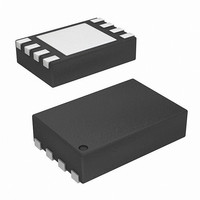ISL97634IRT26Z-TK Intersil, ISL97634IRT26Z-TK Datasheet - Page 6

ISL97634IRT26Z-TK
Manufacturer Part Number
ISL97634IRT26Z-TK
Description
IC LED DRIVR WHITE BCKLGT 8-TDFN
Manufacturer
Intersil
Type
Backlight, White LEDr
Datasheet
1.ISL97634IRT14Z-T.pdf
(10 pages)
Specifications of ISL97634IRT26Z-TK
Topology
PWM, Step-Up (Boost)
Number Of Outputs
1
Internal Driver
Yes
Type - Primary
Automotive, Backlight
Type - Secondary
White LED
Frequency
1.3MHz ~ 1.6MHz
Voltage - Supply
2.4 V ~ 5.5 V
Mounting Type
Surface Mount
Package / Case
8-TDFN Exposed Pad
Operating Temperature
-40°C ~ 85°C
Current - Output / Channel
30mA
Internal Switch(s)
Yes
Efficiency
85%
Lead Free Status / RoHS Status
Lead free / RoHS Compliant
Voltage - Output
-
Available stocks
Company
Part Number
Manufacturer
Quantity
Price
Part Number:
ISL97634IRT26Z-TK
Manufacturer:
INTERSIL
Quantity:
20 000
below. The applied PWM dimming signal can be up to
32kHz; however, the dimming linearity is compromised at
low duty cycles as their durations are too short for the
ISL97634’s control loop to respond properly. This
non-ideality behavior does not cause any functional
problem. The PWM dimming linear responses in Figure 5
are expanded in Figure 10. At 1kHz PWM dimming, the duty
cycle can virtually vary from below 1% to DC. On the other
hand, at 20kHz PWM dimming, the linearity range is from
5% to DC only.
The low level non-linearity effects at high frequency PWM
dimming is also reflected in the efficiency measurements in
Figure 11.
Feedback Disconnect Switch
The ISL97634 functions properly without using the FBSW.
However, the output capacitor will discharge during the PWM
off time resulting in poor dimming linearity at low duty cycles.
The output discharge effect can be seen in Figure 12.
Moreover, the output is modulated by the PWM signal that
may create interference to other systems.
FIGURE 10. DIMMING LINEARITY vs DUTY CYCLES ZOOM IN
FIGURE 11. EFFICIENCY vs PWM DIMMING FREQUENCIES
90
85
80
75
70
65
60
55
50
10
0
9
8
7
6
5
4
3
2
1
0
0
7 LEDs
V
RSET = 4Ω
L = 10µH
IN
= 4V
5
2
10
4
DUTY CYCLE (%)
ILED (mA)
1kHz
6
15
6
32kHz
20
8
20kHz
3 LEDs
V
RSET = 4Ω
L = 22µH
IN
10
25
= 4V
12
30
ISL97634
.
The FBSW should be used for PWM dimming as illustrated
in “Typical Application Circuit” on page 1. During the PWM
off time, the FBSW is opened. The LEDs are floating and
therefore the output capacitor has no path to discharge. The
LED current responds accurately with the PWM signal (see
Figure 13). The output switches very quickly to the target
current with minimal settling ringing and without being
modulated by the PWM signal, and therefore minimizes any
system disturbance.
Overvoltage Protection
The ISL97634 comes with overvoltage protection. The OVP
trip points are at 14V, 18V and 26V for ISL97634IRT14Z,
ISL97634IRT18Z and ISL97634IRT26Z respectively. The
maximum numbers of LEDs and OVP threshold are shown in
Table 1. When the device reaches the OVP, the LX stops
switching, disabling the boost circuit until V
below the OVP threshold. At this point, LX will be allowed to
switch again. The OVP event will not cause the device to
shutdown.
There are three OVP options so that the 3 LEDs application
should use the 14V OVP device and the 7 LEDs application
should use the 26V OVP device. An output capacitor that is
FIGURE 12. PWM DIMMING AT 1kHz WITHOUT USING FBSW
FIGURE 13. PWM DIMMING AT 1kHz USING FBSW
PWM/EN
PWM/EN
V
V
ILED
ILED
LX
OUT
OUT
LX
OUT
V
R1 = 4Ω
L1 = 22µH
V
R1 = 4Ω
L1 = 22µH
falls about 7%
IN
IN
= 4V
= 4V
March 7, 2008
FN6264.3











